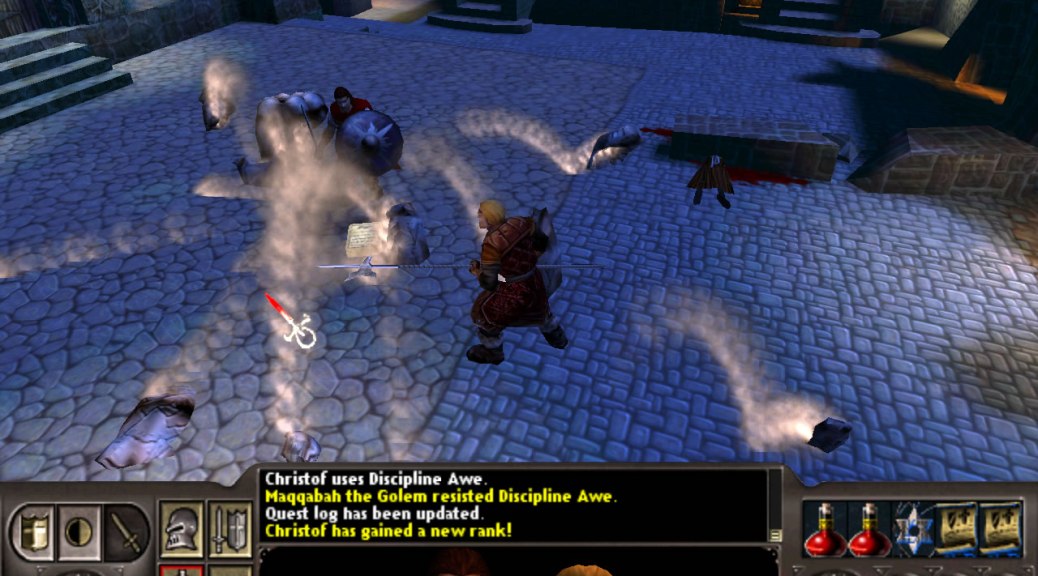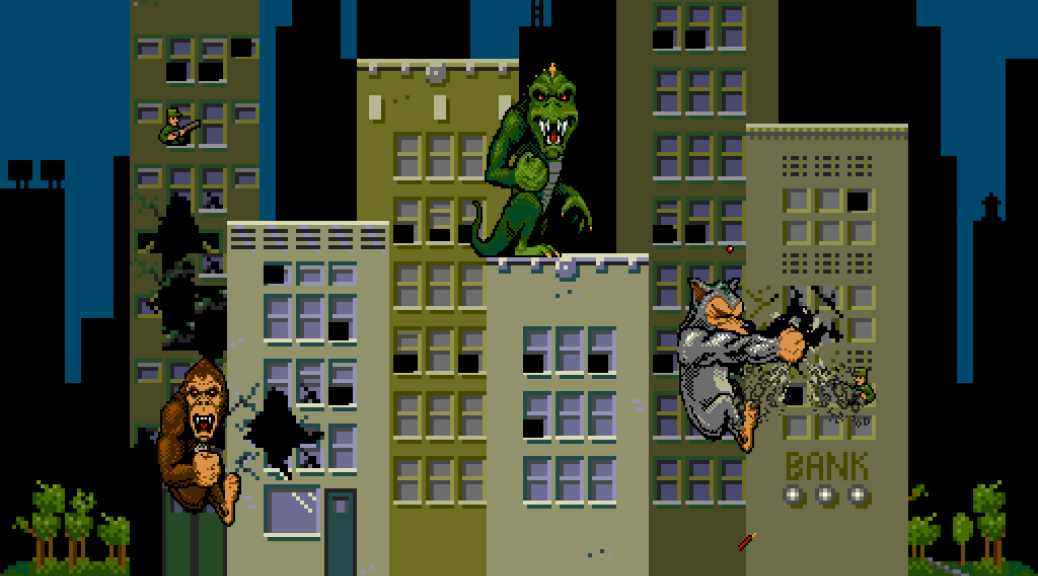An Elder Scrolls Legend: Battlespire is a spin-off from the famous Elder Scrolls series of RPGs by Bethesda Softworks. It first came out in 1997 – between Daggerfall and Morrowind – and is an MS-DOS-based action/RPG with fairly primitive 3D graphics.
Monthly Archives: October 2018
Wanted: Monty Mole, ZX Spectrum
Back in 1984 in the UK there was an infamous, historic miner’s strike that lasted for over a year and caused hardship for many communities. Rather than sit and spectate, young Peter Harrap wrote a satirical platform game about a mining mole and published it, with all the profits going to help the struggling, striking miners. That game was Wanted: Monty Mole, and it launched Pete Harrap on his career making video games, and also the Monty Mole ‘franchise’. Although I can’t really call it a franchise because it wasn’t. It was simply a series of games.
Solstice, NES
Solstice is a neat isometric platform/puzzle game from British developer Software Creations. It was published by Sony for the Nintendo Entertainment System in 1990 and is the (spiritual?) predecessor to the Super Nintendo game Equinox.
Equinox, Super Nintendo
Sony‘s Equinox is an isometric platform adventure that was first released in 1994. It was a Super Nintendo only release, and wasn’t converted to any other platforms. It is also a sequel to the NES game Solstice.
Vampire: The Masquerade – Redemption, PC
Nihilistic Software‘s 2000 release, Vampire: The Masquerade – Redemption, is a 3D RPG with real-time combat and is held in very high regard by those who have played it.
On the surface Redemption is similar in style to Neverwinter Nights, although Neverwinter Nights came two years after Vampire, which demonstrates how ahead of its time it was.
Rampage, Arcade
Rampage is a very fondly-remembered arcade game that features gigantic monsters fighting it out over a series of destroyable skyscrapers.
Mercenary: The Second City, Commodore 64
Not a sequel, but a ‘data disk’ add-on that you load through the original Mercenary. The Second City starts off pretty much the same as Mercenary – crashing on a planet (this time the other side of the one you explored in Mercenary, and also a different colour) and having to explore to get on and eventually escape.
Mercenary: The Second City, Atari ST
A 16-bit conversion of Paul Woakes‘ classic 8-bit exploration sequel to Mercenary. Well, not really a sequel – more a continuation… The real sequel came later.
The Atari ST‘s power (relative to the Commodore 64) means smoother, faster 3D graphics; more colours (useful, when colours are used to identify rooms and places underground); and more sensitive controls.
Mercenary, Atari ST
A fine 16-bit conversion of the classic Mercenary by Paul Woakes, written by Woakes himself it seems. And why wouldn’t it be? It’s a great game and deserves doing right, so who better to code it than the original creator?
Tutankham, Arcade
Konami‘s 1982 arcade game Tutankham is a weird horizontally-scrolling shooter where you play a gun-toting archaeologist, fighting off snakes, mummies, and other meanies, inside a maze-like Egyptian tomb.









